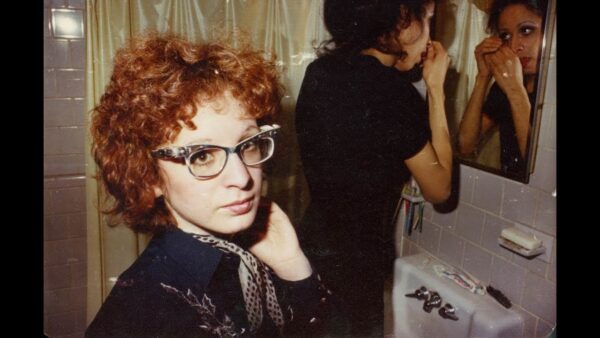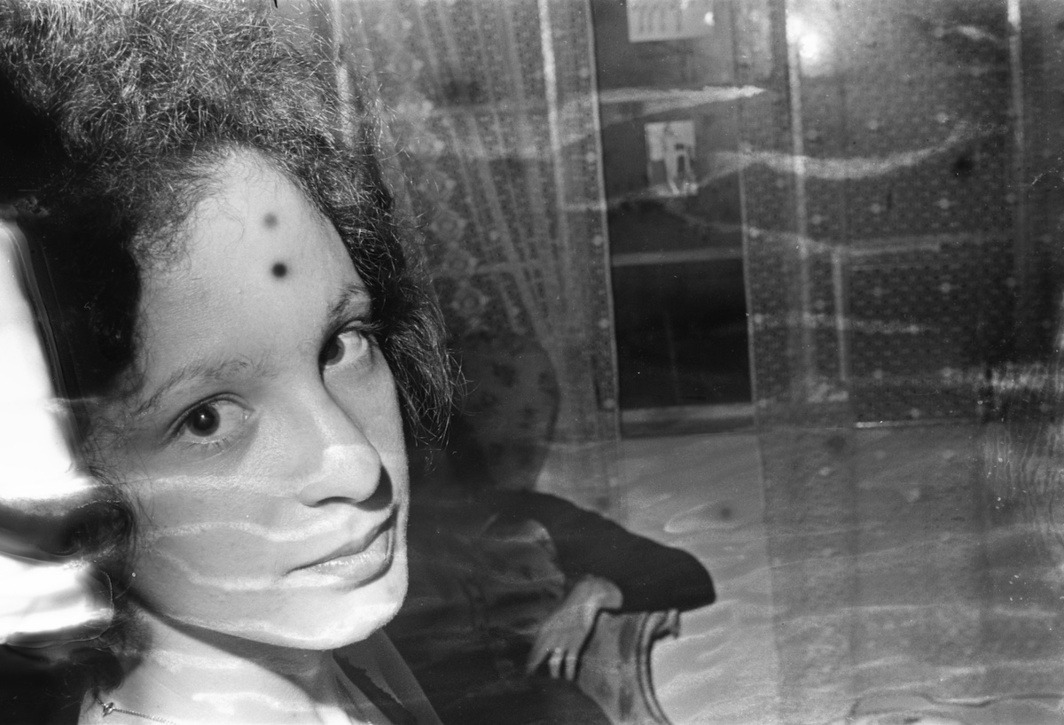
All The Beauty and The Bloodshed is a brilliant, award-winning, documentary following the life of photographer Nan Goldin. We are taken from her childhood through to her current activism in bringing down the Sackler Family, the pharmaceutical dynasty largely responsible for the opioid epidemic’s huge death toll. 500,000 dead so far in the US and counting.
Director Laura Poitras’ (Edward Snowden’s Citizenfour and Julian Assange’s Risk) has split the documentary into different chapters, alternating between Goldin’s life story and her current activism. Goldin narrates her tale and, however much you think you already know about her, be prepared for many previously untold, amazing stories of her life.
Goldin grew up in a middle-class household in 1950’s Cambridge, MA. Her dysfunctional parents gave up on her at age 14, and she ended up in various foster homes before moving in with friends. Family trauma – her inspiring elder sister committed suicide at age 18 after having been unnecessarily institutionalized by her parents – meant that Goldin was very shy and hardly spoke. Then in the 1960’s she met photographer David Armstrong who encouraged her to take up photography to find her voice. She studied photography in Boston and there met a group of like-minded creative/queer friends. Mid-1970s Boston was a tough place for creatives but Goldin and her friends found respite in Provincetown which was by then already a long-standing queer mecca. There she worked in a lesbian bar, lived in a lesbian cooperative, and hung out with people like Cookie Mueller, Divine and John Waters.
 The late 70s saw Goldin move to the Bowery in NY, then full of young queers, artists, and mavericks. She documented her friends in this very sexy, druggy downtown scene, and started showing slideshows of her images at night, always accompanied by different soundtracks. Her work showed power – the power of friendship and the power men had over women at this point. She funded her photography by working variously as a gogo dancer, hooker, and a barmaid at the legendary Tin Pan Alley on Times Square. She initially struggled to get accepted as a photographer. Gallerists were not interested in individuals’ life stories and the male patriarchy prevailed.
The late 70s saw Goldin move to the Bowery in NY, then full of young queers, artists, and mavericks. She documented her friends in this very sexy, druggy downtown scene, and started showing slideshows of her images at night, always accompanied by different soundtracks. Her work showed power – the power of friendship and the power men had over women at this point. She funded her photography by working variously as a gogo dancer, hooker, and a barmaid at the legendary Tin Pan Alley on Times Square. She initially struggled to get accepted as a photographer. Gallerists were not interested in individuals’ life stories and the male patriarchy prevailed.
The mid 80’s saw more interest in Goldin’s work. She documented her boyfriend’s violence against her and this led to the 1986 publishing of the seminal book of her work, The Ballad of Sexual Dependency. Her slideshows continued to gain popularity and she started to gain attention from galleries and collectors. By then AIDS, and heroin addiction, were wreaking havoc on her community and downtown NY in general. She collaborated with friend and fellow artist David Wojnarowicz on an AIDS-themed art show, ‘Witness – Against Our Vanishing’ which caused a lot of controversy, whilst raising much-needed AIDS awareness. This kickstarted the activist gene in Goldin and she got involved with queer activists ACT UP.
During the same period, the Sackler Family, with their family business, Purdue Pharma, had become very wealthy on the back of another addictive drug, Valium. The family moved on to develop OxyContin and Fentanyl, both highly addictive opioid-based painkillers. The family knew how dangerous these drugs were but greed got the better of them, and they actively marketed these drugs to physicians. Goldin and the Sackler Family’s paths may never have crossed had Goldin not been prescribed OxyContin for pain relief following surgery. She became immediately addicted to the drug and it took over her life for several years. Angry at how easily a physician-prescribed drug could ruin her life – she narrowly escaped death by overdose – Goldin decided to draw on her experience of AIDS activism to take on the Sackler Family.
She founded P A I N in 2017. Prescription Addiction Intervention Now. (www.sacklerpain.org). Together with a group of artists, activists and people living with addiction, they decided to target the philanthropy of the Sackler family who had been funding prestigious art institutions around the world. Through a series of high-profile protests they managed to persuade institutions ranging from the Guggenheim, MOMA, The Tate and the British Museum to stop accepting donations from the Sackler family and to remove the Sackler name from galleries. They also, alongside other advocates, followed the Sackler family into the bankruptcy court and into Congress. Goldin put her career on the line to do this, campaigning against institutions that house her work in their permanent collections. However, the gamble has paid off.
Poitras’s documentary won the Golden Lion at the Venice Film Festival. It is so inspiring – showing how collective activism can bring about change. Goldin’s contribution is generous with much previously unseen footage, untold stories and imagery from the 1970s and 80s, as well as more familiar iconic imagery you may recognize. Her narration is very personal and heartfelt. The reminders of so many amazing people lost to AIDS – Cookie Mueller, David Wojnarowicz, David Armstrong etc – are tough to process, but instill the power of friendship and community. Goldin herself has miraculously survived and thrived. A must-see documentary. Long live Nan Goldin!
PS HBO Has purchased the rights to the film and will be screening it soon
Queerguru’s Contributing Editor Ris Fatah is a successful fashion/luxury business consultant (when he can be bothered) who divides and wastes his time between London and Ibiza. He is a lover of all things queer, feminist, and human rights in general. @ris.fatah

